Interesting Facts About Japanese fighter aircraft
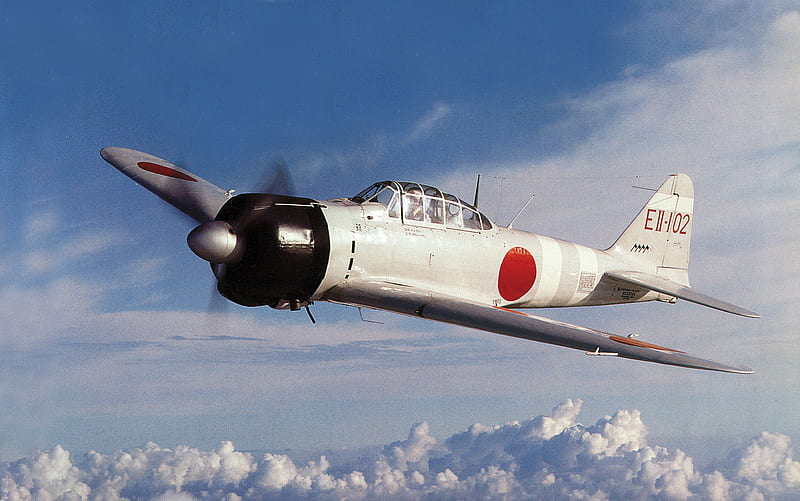
A6M Zero Japanese Fighter
When the 1930’s began to unfold, technological advancements in fighter planes design and manufacturing advanced at a rapid pace. The warring parties in World War I were now in a race to see who could develop the best fighter planes of the future. Five countries led the pack. The United States, Great Britain, Germany, Japan, and the Soviet Union. The United States, Great Britain and Japanese were Naval powers who were producing cutting age Aircraft Carriers to augment their Battleship Navies that in the future would play a significant role in projecting power over vast expanse of the oceans.
The double and triple wing and cloth covered fighters of World War I were now relegated to the pages of history. By the mid 1930’s sleek single wing, single engine aircraft began to emerge. Advances such as retractable landing gear, covered cockpits, oxygen systems and parachutes were becoming standardized equipment. At the outset of World War II, the German Messerschmitt Bf 109 and the British Supermarine Spitfire would tangle in one of the war’s epic air battles in 1940. While the United States would not enter the war for several years it was busy supplying the British with its current front-line fighters, namely the Curtis P-40 Warhawk.
In the case of the Japanese, they had been in a state of war since their 1931 invasion of Manchuria. The fractured Chinese Air Force could do little to deter the Japanese Air Force. The Chinese fought bravely however, their aircraft was not up to the standards and quality of the Japanese. When the Japanese raised the stakes in the world-wide conflict with their attack on the United States with the attack on Pearl Harbor, the world would soon see how exceptional some of the Japanese aircraft were as Japanese industry would produce some iconic aircraft in WW2.
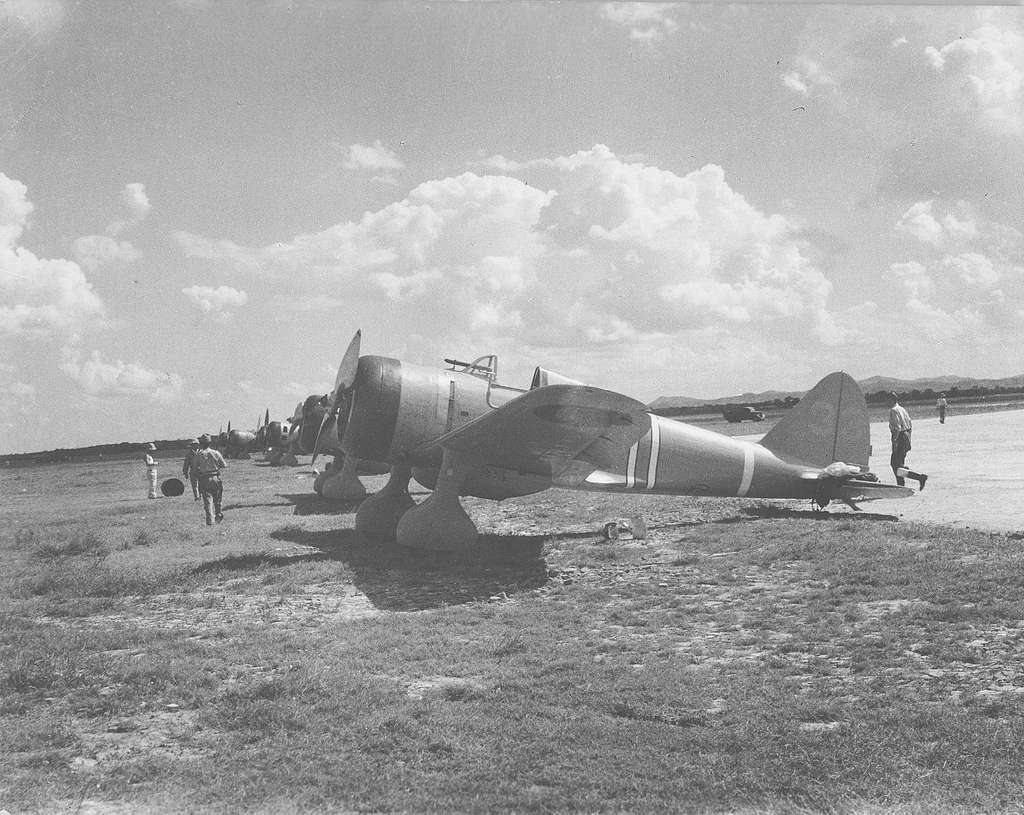
Nakajima Ki-27
The Nakajima Ki-27 (Allied code name-Nate) was the first single-wing, single engine all metal stresses skin fighter produced and then adopted by the Japanese Army. First flown in October 1936, designed to replace the dated Kawasaki Ki-10 biplane. Designed by Koyama Yasushi, the Ki-27 was equipped with an air-cooled engine, two blade propeller and fixed landing gear. The Ki-27 had a slower top speed and climb rate than its competitors, however, top brass were impressed with its turning ability because of its low wing loading low wing loading. The Ki-27 first saw action in Northern China in March 1938 where its main adversary was the Soviet supplied Polikarpov 1-16, a very nimble fighter with firepower. After the attack on Pearl Harbor the Ki-27 was relegated to escorting bombers on British assets in the Far East. Clearly out-classed by Allied aircraft the Ki-27 would be relegated to home defense and Kamikaze attacks by war’s end.
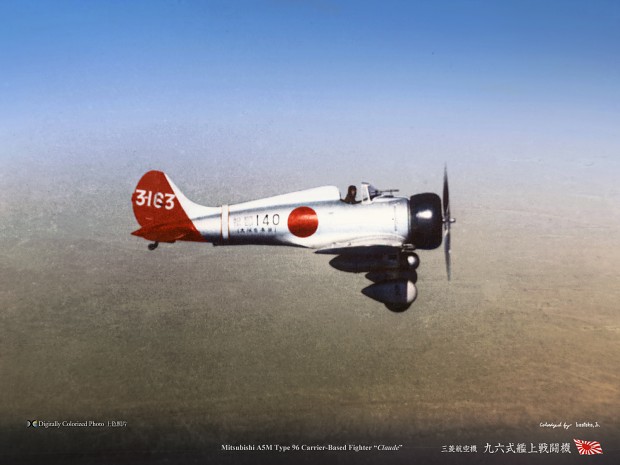
Mitsubishi A5M
The Mitsubishi A5M (Allied code name – Claude) designed by Jiro Horikoshi, was a Japanese carrier-based fighter aircraft. It had the distinction of being the world’s first monoplane fighter aircraft. In 1934 the IJN (Imperial Japanese Navy) issued specs for an advanced all-metal fighter capable of reaching a speed of 200 mph and climb to 16,000 ft in 6.5 minutes. Both Mitsubishi and Nakajima produced models. Horikoshi’s version was an all-metal low-wing fighter, with a thin elliptical inverted gull wing and a fixed undercarriage, which was chosen as the increase in performance (testing indicated an estimated 10% in drag, but only a mere 3% increase in maximum speed) arising from use of a retractable undercarriage was not felt to justify the extra weight. The first prototype, powered by a 447 kW (600 hp) Nakajima Kotobuki 5 radial engine, flew on 4 February 1935. A later prototype was fitted with a revised, ungulled wing, and after various changes to maximize maneuverability and reduce drag, was ordered into production as the A5M and was accepted by the IJN. Nearly all A5Ms had open cockpits. A closed cockpit was tried but was rejected by Navy aviators. The A5M faced off against the Chinese in 1937, going up against the Boeing P-26 Peashooter. Both were very similar in design. Armed with only two 7.7 machine guns, it routinely bested the Chinese fighters. It wasn’t unto the A5M encountered the Soviet Poplikarpov I-16 did it run into trouble. By the end of 1941 the A5M’s would be replaced by the legendary A6M Zero.
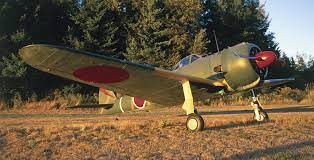
Nakajima Ki-43
The Nakajima Ki-43 Hayabusa (Allied code name – Oscar) designed by Hideo Itokawa, came off the design board in 1939 and first flew in 1941. Designed to be a replacement for the dated Ki-27, it featured the latest features the Ki-27 lacked. Initially, Nakajima stuck to its principal of light-weight aircraft with maneuverability. However, as with the Ki-27, they choose to pass on pilot armor and self-sealing tanks, a move that would be costly in the future. Initially armed with 2 two 2 X 7.7 Type 97 machine guns in the upper engine cowling synchronized to fire through the propeller blades and top speed of 307 mph. It took the Japanese Army two years to warm to the Ki-43 only after a new wing design that increased its turnability in dogfights. Subsequent models saw increased firepower as heavier machine guns and cannons were added. And after many disastrous losses, pilot armor and self-sealing fuel tanks were added. Like many other Japanese aircraft, the Ki-43 was relegated to homeland defense as the Japanese were pushed back in the Pacific. By war’s end nearly 6,000 Ki-43’s were produced.
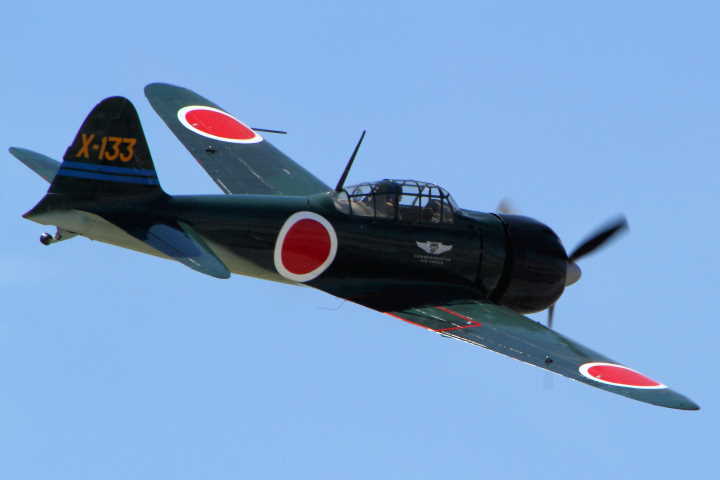
Mitsubishi A6M Zero
The Mitsubishi A6M Zero (Allied code name – Zeke) designed by Jiro Horikoshi, also known as the Navy Type O fighter aircraft, is arguably the best-known Japanese fighter of WW2. During its day it was the gem of the IJN (Imperial Japanese Navy), leading the Navy to early dashing victories in the Pacific theater. The Zero was the results of specifications written in 1937 and first flew in 1939. Full production began in 1940, and the Zero first saw action in China. It was first powered by a Nakajima Sakae radial air-cooled engine of 14 cylinders (two staggered rows of seven) that produced a little over 1,000 horsepower. Later models used a 1,130-horsepower engine to turn its three-blade constant-speed propeller. Its top speed was 350 miles per hour (565 km) at nearly 20,000 feet (6,100 m), and it was armed with two 7.7-millimetre machine guns and two 20-millimetre cannons in its wings. Wing mounts could carry two 132-pound (59.9-kilogram) bombs under the wings. The Zero had several advantages over Allied fighters: maneuverability and range. The American F4F Hellcat had a range of a little over 700 miles, while the Zero with its 156-gallon internal tank and 94-gallon external drop-tank could reach over 1600 miles. Like other Japanese aircraft the Zero was not fitted with armor plating for the pilot and self-sealing tanks, which, resulted in catastrophic loses when better U.S. fighters began to appear. The Zero had a production run of 10,068 aircraft, ending the war a deadly Kamikaze weapon.
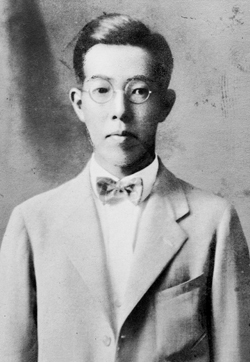
Jiro Horikoshi, A6M Zero, designer
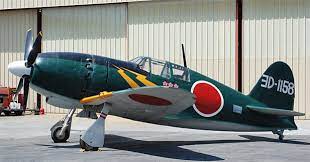
Mitsubishi J2M
p> The Mitsubishi J2M Raiden, (Allied code name – Jack) was another Jiro Horikoshi creation. Like the A6M the J2M had a sleek, streamlined, and sturdy airframe. These features allowed it to glide and maneuver through the air at high speeds. First developed in late 1942, however, teething problems delayed their deployment by nearly a year. By the time the Raiden was ready its mission was crystal clear. The U.S. was rapidly advancing across the Pacific. By this time the Japanese were fearful of what the Germans were experiencing as the Allies were bombing key German industrial cities around the clock. The U.S. was now unveiling its game changing Boeing B-29 Superfortress, and even more concerning that the U.S. was taking territory in an attempt to launch attacks on the home islands with its new bomber. The Raiden had a 1,420 hp Kasei 23c engine equipped with a turbo supercharger (mounted in the side of the fuselage just behind the engine) that allowed the rated power to be maintained up to 30,000 ft. Two upward-aimed, oblique-firing (aimed at seventy degrees) twenty mm cannons, mounted in the German Schräge Musik style, were fitted behind the cockpit with the four wing cannons retained. The first operation ready Raiden’s were delivered in late 1943 and made its first battle test in June 1944 at the battle of the Philippine Sea. After the fall of the Philippines, Guam, Tinian and Saipan, the Raiden was repositioned to homeland defense. When confronting he B-29’s at high altitude, the lack of supercharger limited their success, and the fact the U.S. began to switch to night-time raids. A little over 700 units were produced.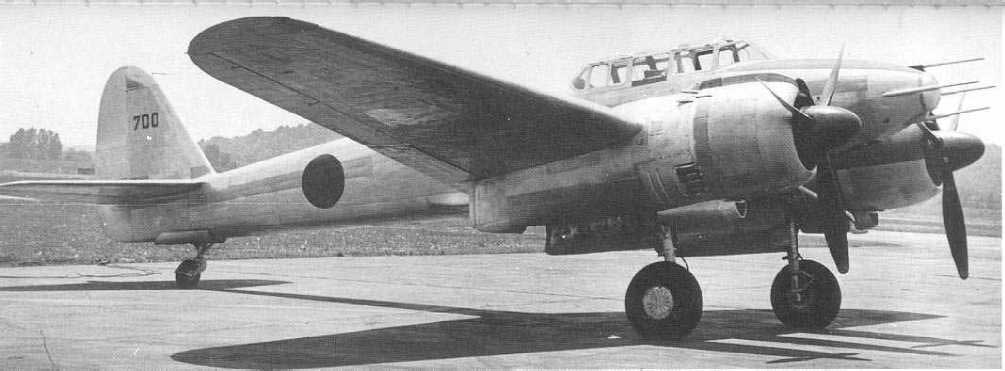
Nakajima J1N1
The Nakajima J1N1, (Allied code name – Irving), in 1938 the IJN issued a request for a twin engine fighter escort to shepherd its primary bomber the Mitsubishi GM3 (Nell) in conflict in China. At that time, the longest ranged fighter was the A5M with a range of only 750 mph. The Gekko could more than double this. The Japanese were thoroughly impressed with the performance of the German Messerschmitt Bf 110 twin engine fighter. Mitsubishi and Nakajima began work on the project in 1939, the first prototype flew in 1941. The Gekko was equipped with two 843 KW (1130 hp) Nakajima Sakae 21/22, 14-cylinder radial engines. The Gekko had 3 crew members and was armed with a 20 mm Type 99 cannon and six 7.7 mm Type 97 machine guns. Four of the machine guns were mounted in a powered turret, however, this reduced the aircraft’s performance. The fighter plans were scrapped and instead a reconnaissance version went into production, the J1N1-C. It would take the disobedience of an officer to realize the Gekko’s full potential when, in 1943 Commander Yasuna Kozono of the 251st Kokutai serving in Rabul suggested 20 mm cannons firing upwards at a 30-degree angle in the fuselage. Kozono tested his theory on May 21, 1943, when the modified plane shot down two B-17 heavy bombers. After this feat the IJN took notice and ordered the night version model. This model only required two crew members and was armed with two 20 mm Type 99 cannons at an upward 30 degree angle and two downward firing cannons at a 30 degree angle. The Gekko continued to enjoy success against the B-17 and B-24 bombers, however, when the high-flying B-29 began to appear over Japanese skies the Gekko was not able to reach it at altitude on a consistent basis. Like many other Japanese aircraft, the Gekko would end the war as a Kamikaze threat.
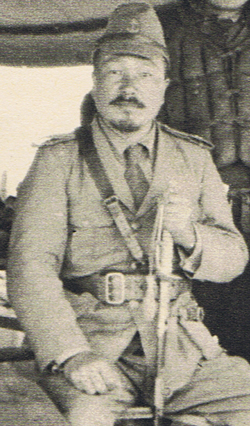
Cmdr. Yasuna Kozono
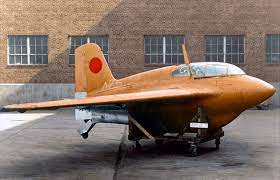
Mitsubishi J8M1
The Mitsubishi J8M1 Shusui was a collaboration between Germany and Japan to secure the outstanding rocket powered Messerschmitt 163 Komet for the Japanese empire. Capable of reaching a phenomenal speed of 559 mph was a great interest to the Japanese in late 1944 as they were now faced with incessant B-29 Superfortress high level raids over the homeland. The Japanese obtained drawing, blueprints, and technical manuals for the stubby little Komet. In addition, they obtained a Walter HWK 109-509 rocket engine license from the Germans for 20 million Reichsmarks. However, getting a disassembled model proved to be a difficult situation as the fortunes of war made it difficult to move by sea. The first attempt occurred on March 30, 1944, when the Japanese submarine RO-501 loaded with a Komet departed Kiel, Germany for Kobe Japan.
The RO-501 was sunk mid Atlantic on May 13, 1941, by the U.S. Navy ASW aircraft from the escort-carrier Bogue. In another attempt, Japanese submarine I-29 was sunk on July 26, 1944, by the USS Sawfish near the Philippines. Faced with this reality, the Japanese turned to Mitsubishi to build a prototype based on a Me-163 technical manual obtained by IJNAF engineer Cdr Eichi Iwaya. The resulting aircraft, designated the J8M1 Shusui (“Sharp Sword”) by the IJNAF and the Ki-200 by the IJAAF, were to be built by Mitsubishi. The Japanese also built their own version of the Walter HWK 109-509 engine at the 1st Naval Air Technical Arsenal in Yokosuka. The first powered flight occurred on July 7, 1945 but ended in disaster when the Shusui stalled after a successful take-off. In the resulting crash pilot, Toyohiko Inuzuka died the following day from his injuries. Armed with two 30mm Ho-105 cannon capable of firing 400 rounds per minute, seven planes were manufactured by war’s end.
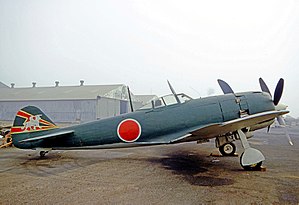
Nakajima Ki-84
The Nakajima Ki-84 The Hayate (Allied code name – Frank) first flew in March of 1943. The Ki-84 was designed to improve upon deficiencies of previous Nakajima aircraft. Mainly insufficient fire power, inadequate defensive armor, and speed to match the P-51 Mustang, F6F Hellcat, P-38 Lightning, and F4U Corsair. The Ki-84 was dubbed the fastest Japanese piston engine fighter. However, due the Japanese losses by 1944, production of the Ki-84 suffered from a lack of materials and high-quality fuel, and lack of pilots needed for their speedy fighter. It was the Nakajima firm's own-designed 35.8-litre (2,180 cu in) displacement, Ha-45 Homare air-cooled eighteen-cylinder radial engine, first accepted for military use in 1941, that gave the Hayate its high speed, over 400-mph, and its ability in combat. The first major operational involvement was during the battle of Leyte at the end of 1944, and from that moment until the end of the Pacific war the Ki-84 was deployed wherever needed to stave-off from the powerful U.S. forces in intense action. The 22nd Sentai re-equipped with production Hayates. Though it lacked sufficient high-altitude performance, it performed well at medium and low levels. Seeing action against the USAAF 14th Air Force, it quickly gained a reputation as a combat aircraft to be reckoned with. Fighter-bomber models also entered service. On April 15, 1945, 11 Hayates attacked US airfields on Okinawa, destroying many aircraft on the ground in a daring raid.
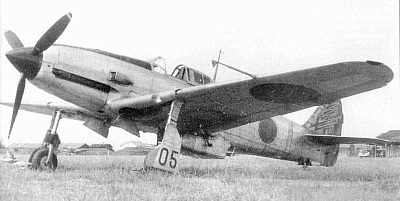
Kawasaki Ki-61
Kawasaki Ki-61 Hien (Allied code name – Tony) designed by Takeo Doi and Shin Owada, for use by the Japanese Army Air Force. After acceptance by JAAF, the Ki-61 was ready to go into production in 1943. The Ki-61 was quite different from other Japanese fighters, owing this to its notable German influence by former Kawasaki head designer, Dr. Richard Vogt Vogt returned to Germany in 1933, however, Kawasaki would be influenced by his design principles for years to come. Vogt favored liquid-cooled inline engine while other manufacturers preferred air-cooled engines. In March 1938, Kawasaki signed an agreement with Daimler-Benz of Germany for manufacturing rights to the liquid-cooled inline engines then under development by the German firm. As a follow-up, in April 1940, a Kawasaki engineering team visited Daimler-Benz in Stuttgart to obtain plans and samples of the DB 601A engine, destined to be used in the Bf-109. The Kawasaki engine team increased the take-off power of their version of the engine to 875 kW (1,175 HP) and reduce its weight slightly. The engine was put into production in November 1941. It was designated the "Ha-40", or "Army Type 2", though it would be later redesignated the "Ha-60" in a combined Army/Navy venture.
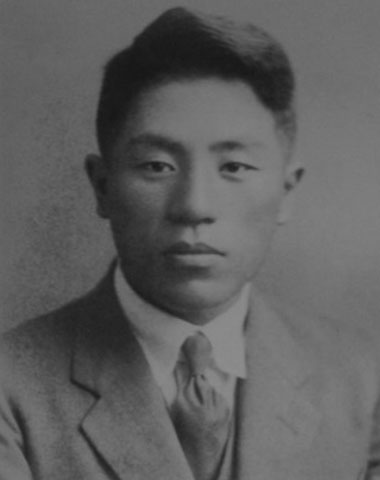
Takeo Doi, Kawasaki Ki-61 designer
Early comparison against Axis and Allied aircraft the Ki-61 held its own, showing great speed, maneuverability, diving speed, and the pilots appreciated the added armor protection for the pilots, and the fuel tanks. The Ki-61 entered combat in the spring of 1943 in the New Guinea war zone, the new Japanese fighter caused a lot of headaches among Allied pilots, particularly when they found out the hard way that they could no longer go into a dive and escape as they had from lighter Japanese fighters. 5th Air Force Commander General George Kenney found his P-40 Warhawks completely outclassed and requested more P-38 Lightnings to counter the threat of the new enemy fighter. The Japanese Ho-5 20-millimeter cannon wasn't available at the time, but the Japanese obtained 800 Mauser MG 151/20 20-millimeter cannon from Germany in August 1943 and modified 388 Ki-61-I airframes on the production line to carry the German weapons in place of the two 12.7-millimeter wing guns. The cannon had to be mounted on their sides to fit into a wing, with an underwing blister for the breech, and some reinforcements were added to the wing to absorb the heavier recoil. As Allied forces pushed in the bounds of Japan's overextended ocean empire, the Hien fought in the South Pacific, in the Philippines, on Okinawa, and finally in defense of the Japanese home islands themselves. Some Hien units also served on in China and on Formosa.
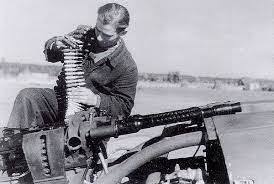
MG 151/20 20-millimeter cannon
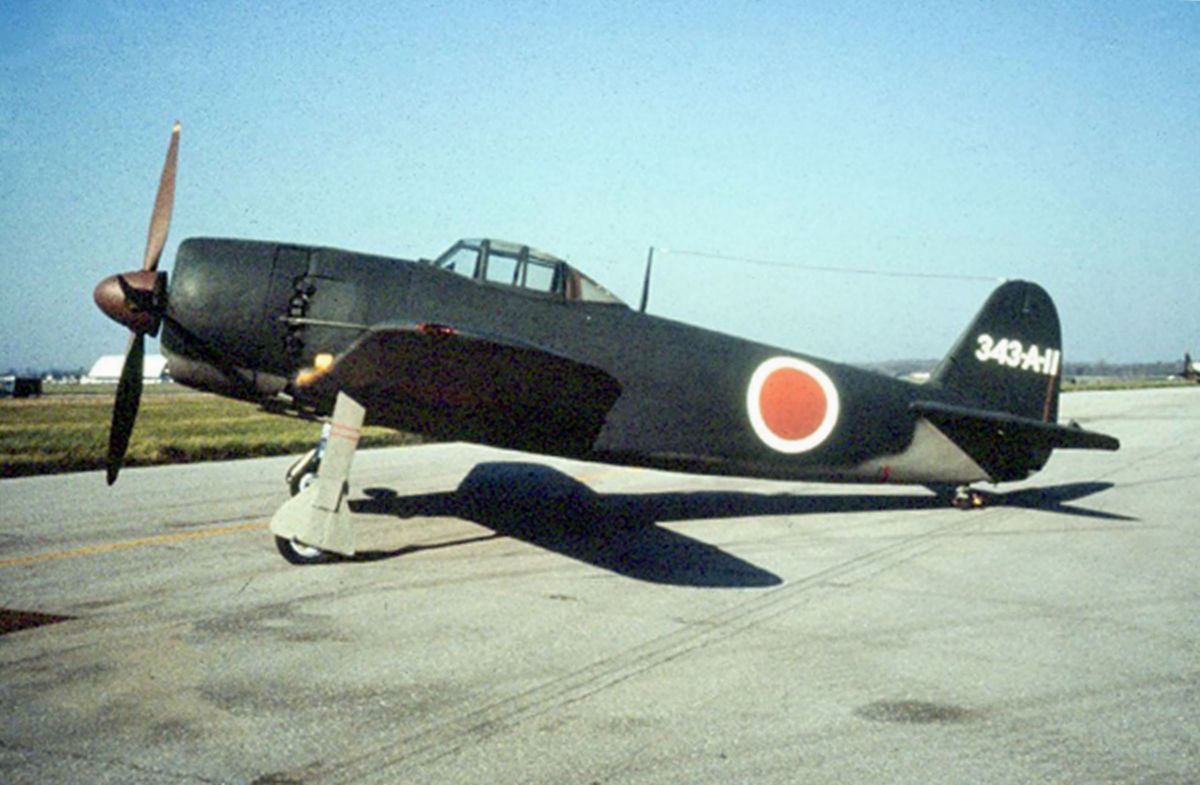
Kawanishi N1K2-J
The N1K2-J Shiden-Kai (Allied code name – George) manufactured by Kawanishi Aircraft Company. he Shiden Kai story begins in December 1941 when a team of designers at the Kawanishi Aircraft Company proposed a land-based version of the float-equipped fighter called the Kawanishi N1K1 Kyofu (Mighty Wind, Allied code name REX). After modifications, the Shiden took to the skies December 1942. Over the next year, Kawanishi worked to resolve various problems with the design before navy pilots took the first Shidens into combat early in 1944. The Shiden Kai’s impressive capabilities motivated the navy to get the aircraft into combat as quickly as possible. Capable of rolling at 82° per second at 240 mph (386 km/h) and having a maximum speed of about 370 mph (595 km/h) at 18,000 ft (5,480 m), the Shiden Kai was maneuverable and fast and mounted a formidable array of four 20mm cannons in the wings. Japanese pilots with skill and experience could hold their own in combat with American pilots flying F6F Hellcats and F4U Corsairs.
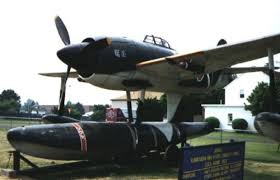
Kawanishi N1K1
The Japanese navy gathered a group of experienced fighter pilots, formed them into the 343rd Kokutai (air group), and assigned them to fly Shiden Kai fighters. The group was led by Minoru Genda, who helped Admiral Yamamoto plan the Pearl Harbor attack in December 1941. The 343rd Kokutai entered combat in March 1945 in the defense of the Japanese home islands. The Shiden Kai was thought to be considerably better than the Japanese Navy's most common fighter, the A6M Zero. With a top speed of 369 mph, the N1K2 was about 20 mph faster than the A6M Zero. The heavier Shiden Kai also possessed surprisingly good maneuverability due to a mercury switch that automatically extended the flaps during turns. These "combat" flaps created more lift, thereby allowing tighter turns. Unlike the A6M Zero, the Shiden Kai could compete against the best late-war U.S. Navy and U.S. Army Air Forces fighters. Shiden Kai pilots scored several successes against low-flying, carrier-based U.S. Navy fighters. Even so, they did little to stop high-altitude B-29 attacks because of the N1K2's insufficient climbing ability and the considerable loss of horsepower and engine reliability above 21,000 feet. These B-29 raids seriously hindered Shiden Kai production by heavily bombing the plants building the fighter.
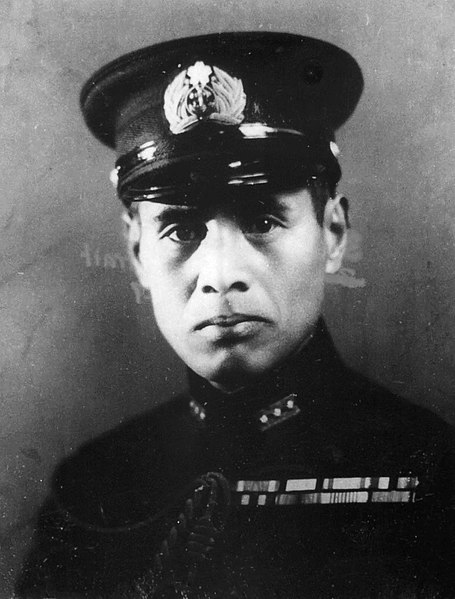
Cdmr. Minoru Genda
The era of World War II lasted a short time in actual combat, but the legacy of these great fighters has lasted for decades. When discussing the top Japanese fighter aircraft of this era, arguably, the most recognizable is the feisty A6M Zero. Much of this can be attributed to its early success after Japan attacked the U.S. For nearly two years the A6M Zero ran wild in the Pacific until the Americans recovered a slightly damaged Zero on the Aleutian Island, Aukutan during the attack on Dutch Harbor during the Battle of Midway. The Americans were able to fully evaluate the Zero and discover its deficiencies. When the U.S. began to put forth better fighter aircraft it forced the Japanese to do likewise. In a sense, Japanese engineering and aircraft production in WW2 proved to be quite effective on building on the success of the A6M Zero. However, the Japanese would suffer the same fate as their German ally who, by mid-1944, it was clear that it would be a matter of too little too late as they were overwhelmed by the Allies in planes and pilots.
If you enjoyed this informative article, please feel to join my Facebook Group - Evolution Of WW2 Fighter Aircraft
You can now view our store apparel at our Apparel Store